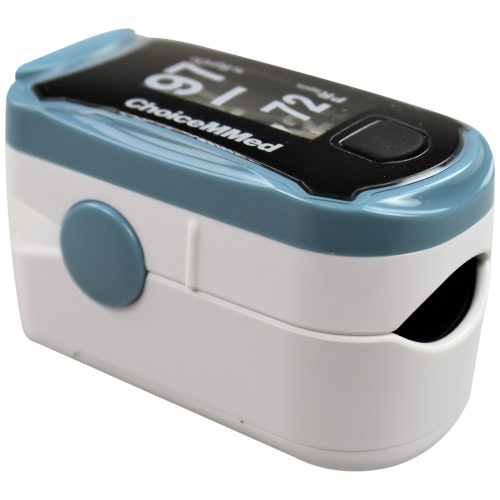- My Account
- Place a Reorder
- Logout
Home » Respiratory Therapy » Oxygen Concentration » Pulse Oximetry
Showing the single result
-
Sale!
 Dynarex
DynarexChoice MMed OxyWatch C20 Fingertip Pulse Oximeter
Starting at: $43.59 Select options This product has multiple variants. The options may be chosen on the product page
Pulse Oximetry
Pulse oximetry is a noninvasive method used to measure the oxygen saturation level in the blood. This essential tool helps monitor how well oxygen is being delivered throughout the body, providing critical information for healthcare providers.
Features
- Noninvasive Monitoring: Pulse oximetry uses light to measure oxygen levels, eliminating the need for blood samples.
- Real-Time Data: Provides continuous, real-time monitoring of oxygen saturation and pulse rate.
- Portable and Convenient: Available in various forms, including portable, battery-operated devices for home use.
Benefits
- Quick and Easy: Offers a fast and painless way to check oxygen levels, making it suitable for both clinical and home settings.
- Early Detection: Helps detect low oxygen levels early, allowing for timely intervention and treatment.
- Versatile Use: Can be used in various medical settings, including emergency rooms, operating rooms, intensive care units, and during routine checkups.
Applications
Pulse oximetry is widely used in healthcare for:
- Monitoring patients with respiratory conditions such as asthma, pneumonia, and chronic obstructive pulmonary disease (COPD).
- Assessing the effectiveness of treatments like supplemental oxygen and inhalers.
- Evaluating patients during surgery and post-operative recovery.
Available Devices
- Fingertip Pulse Oximeters: Compact and easy to use, ideal for home monitoring.
- Handheld Pulse Oximeters: Portable devices with additional features for clinical use.
- Multiparameter Monitors: Integrated into larger monitoring systems for comprehensive patient care.
Precautions
- Ensure proper placement of the pulse oximeter sensor to obtain accurate readings.
- Be aware that factors such as nail polish, skin pigmentation, and poor circulation can affect the accuracy of readings.